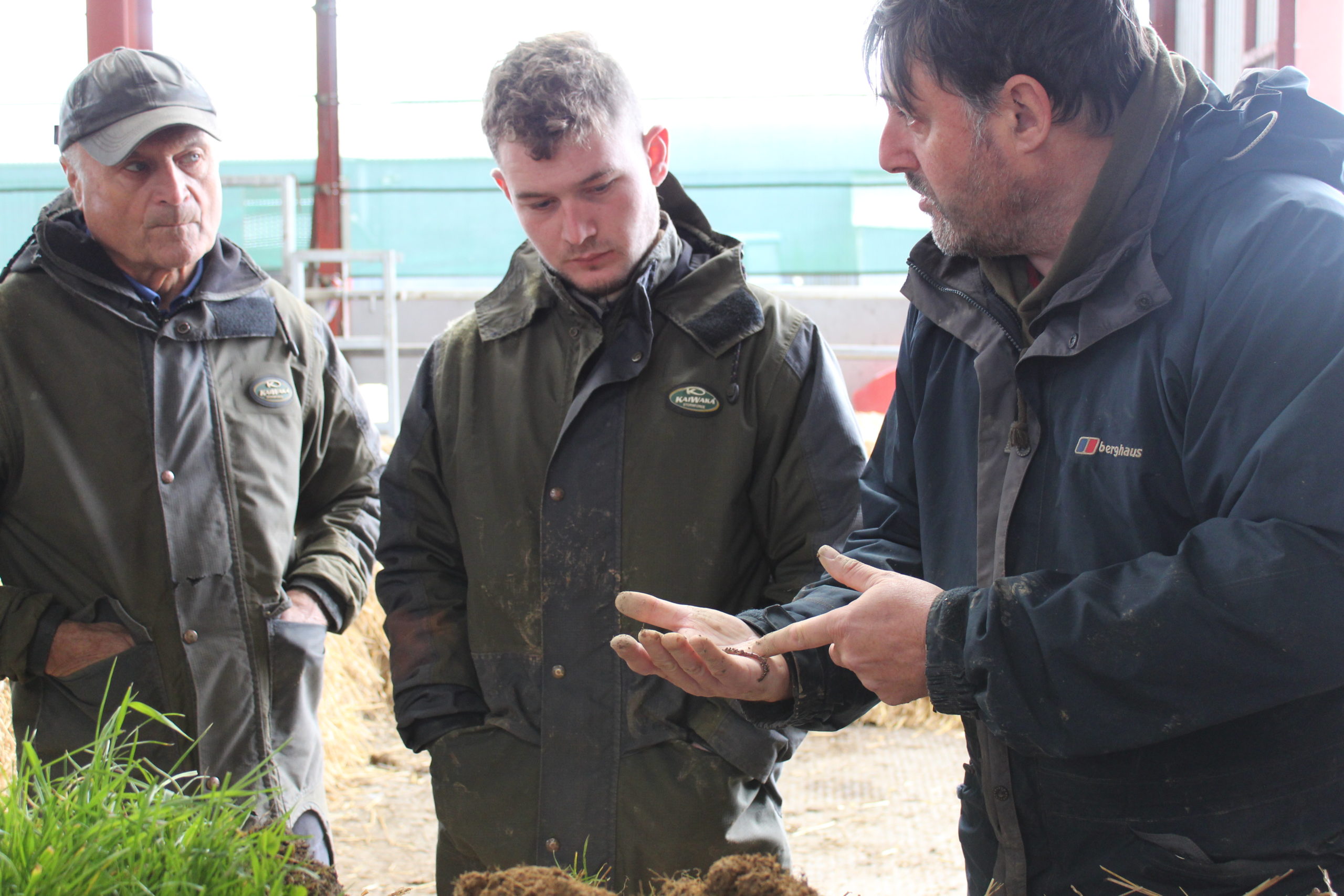“Who knew that?” reflected Powys farmers who attended a workshop and practical sessions led by one of the UK’s leading grassland and soil experts.
Charlie Morgan, the author of over 60 academic papers including on various trials of different grasses and soil treatments, was on hand to explain the secrets of healthy soil. They discovered that a jam jar of soil contains millions of bacteria and miles of mycorrhizal fungi which are all needed to keep the soil healthy along with a good supply of earthworms to take leaf and plant litter from the surface down into the soil.
He says only 30% of recent soil samples taken in Wales are at the correct pH level of 6 to 6.5. Rainfall depletes lime reserves as does the application of nitrogen and sulphur, which increases acidity. Charlie recommends applying lime in early spring or autumn because dry conditions in summer will result in lime particles sitting on the grass leaf; winter applications risk runoff. He says potash and phosphate levels are also extremely variable across Wales; potash is often deficient on silage ground while grazing land can have too much of both minerals.
“If we don’t feed the soil, we don’t feed the grass, and the result is no feed, or more expensive feed, for livestock”, he told members of the Maesmawr Group which is running the Nature and Us Working Together SMS project.
He said soil testing was essential and a good investment costing as little as £10 a field but providing vital information on pH, phosphate, potash and magnesium levels. Walking the fields to check on the types of plants in grassland and also digging out soil clods to check for compaction (and take remedial action) and that earthworms are present to aerate and feed the soil.

